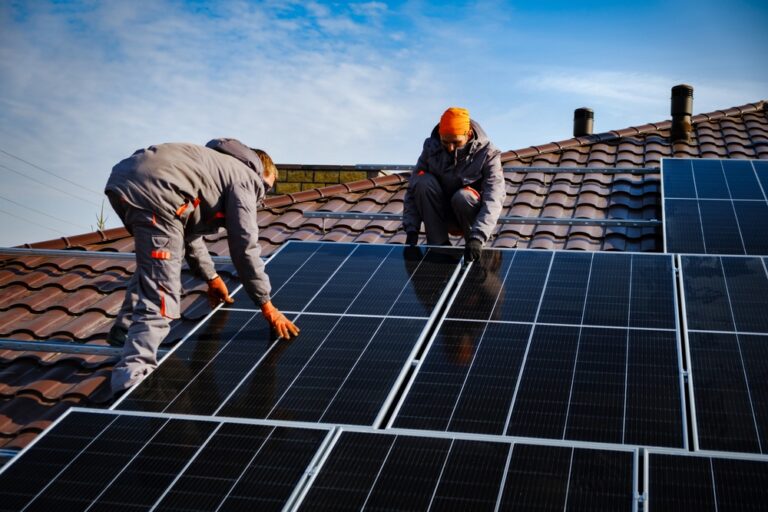Latest News
Different types of solar panels

The three main types of panels do not look too dissimilar from one another, but they are completely different types of solar panels. From the cost, their material, their efficiency rating, and their lifespan.
There are many things to consider when picking between the different types of solar panels. Hopefully, we can clear up their main differences and make your choice a little easier.
How do solar panels work?
Solar panels consist of several photovoltaic (PV) cells. When sun rays hit the exterior of a Solar panel, the energy from the sun is essentially ‘soaked up’ by these Solar cells. This results in the cells starting to vibrate which produces green electricity.
What does Solar Panel cell count and efficiency mean?
The efficiency of each PV panel varies. Various types and even brands of solar panels can convert sunlight more efficiently than others. This is because the amount and kind of silicon cells in a panel might vary.
A Solar Panel’s cell count frequently impacts its cost, size, and weight. Although it is commonly assumed that the more silicon cells a panel contains, the higher the wattage and power output. However, this is not necessarily the case. The quality and efficiency of the solar cells themselves determine the power output of a panel.
Monocrystalline Solar Panels (Mono-SI)
These panels are the oldest most developed type of Solar panels. When compared to other varieties of solar panels these ones rank the most expensive. The process of manufacturing a single-crystal silicon cell is extremely complex therefore their higher costs.
The silicone that makes up Monocrystalline solar panels is the purest one. Due to its high purity, it has one of the highest efficiency rates among all solar panels. The new Monocrystalline solar panels can reach above 20% efficiency and have a lifespan of 25-40 years.
Usually, you can spot a Monocrystalline solar panel by looking at the hue of the panel. These solar panels will have a black hue and rounded edges. Not only does their appearance make them recognisable but it helps the solar cells produce more electricity. Their colour often makes them a primary choice for those wanting to keep the outside of their homes looking modern.
Polycrystalline Solar Panels (Poly-SI)
As the process of making these solar panels is a lot quicker, the cost of them comes in a lot cheaper. Especially in comparison to Monocrystalline solar panels. To produce these panels, the manufacturers melt down raw silicone and pour it into square moulds to make wafers.
The efficiency of these panels is around 15%. Although slightly lower than Monocrystalline solar panels, they are cheaper and still have a lifespan of around 20-35 years.
To recognise Polycrystalline panels, you would look out for a blue hue across the surface of them. If you want to make a more environmentally friendly choice, these panels are a great option as there is a lot less waste in the manufacturing process.
Thin-Film Solar Cells (TFSC)
Thin-film solar cells are your most cost-effective choice. They are the easiest to produce as less material is used. They are made by placing one or more photovoltaic materials onto a substrate. Within these panels, the cells are roughly 350 times thinner than the wafers used in both panels previously spoken about.
TFSC typically have lower efficiencies and power capacities reaching around 11% efficiency. They are a great choice if you have a large amount of roof space available for installation. This would generate more solar energy.
Due to the thin and flexible design of the panels, they can be moulded onto your roof for a more discrete look. This is something the other panels cannot offer.
So now we have run through the top three solar panels on the market the choice is yours. Contact our expert team for more information about the renewable energy solutions we offer and how they can benefit your home.

